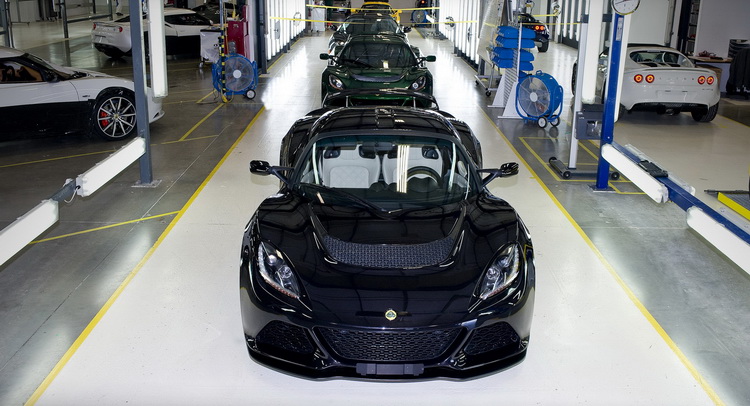According to documents filed at Companies House, the Lotus Group posted a £71.1 million (US$110 million) loss in the 2014 financial year that ended on March 31. This is both bad and, surprisingly, good news.
The bad news is, of course, that the Hethel-based British automaker is virtually invisible in the automotive world, as it has sold just 1,301 cars. Losses along with a high cost base forced new CEO Jean-Marc Gales to lay off 300 people.
“If you sell 1,200 cars, you can’t employ 1,200 people”, he told CAR magazine. “As regrettable as it is, it had to be done to save the company.”
A big hit for the company was the situation at Lotus Engineering, which saw its revenue collapse by 43 percent, to £13 million (US$20 million) in the same fiscal year. The filing put this down to “an internal refocusing of engineering resources to strengthen Lotus products, including quality improvements”.
So, what’s the good news? First of all, the fact that Lotus’ loss was less than half the £168 million (US$261 million) posted in the previous 12 months. As a matter of fact, Gales is optimistic that the company can reach an operation break-even point by 2016!
“It’s better than the year before but far from good”, said Gales. “It was a substantial loss. But our goal is to make Lotus a company that is self-sustaining, with positive operational cash flow. That is my very precise target for the next financial year, that starts April 1, 2015 and runs to March 31, 2016.”
Moreover, since April Lotus has shifted 1,448 cars, an increase of 55 percent over the same period in 2013 and the best performance since 2008. The carmaker expects to sell 2,000 cars until March 2015.
One factor that will help Lotus achieve its goals is the new Evora range that will make its debut at next year’s Geneva Auto Show. The mid-engined sports car will have lots of improvements and there’s a lot of speculation concerning new versions, including an “Evora Allroad” crossover.









